

Truth be said, tomato plants reign as kings in every vegetable patch, be it in the ground or on a balcony or terrace. Never does one get bored with that tasty, juicy flesh. Notwithstanding this aura, sometimes they play hard-to-get and at times even require full-time care.
Here are the keys to care for tomato plants! → Read also: posts about tomato
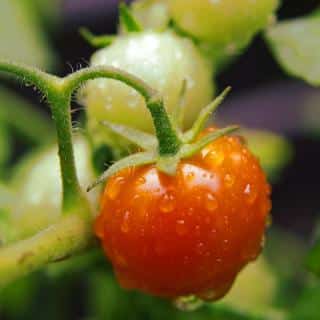
Keeping the soil cool and spacing watering in time during summer is easy if you spread a layer of mulch. Tomatoes most appreciate mulch prepared from compost, leaves, and grass trimmings. For an impressive long-term enrichment, try ramial wood chips out, perhaps mixed in with either grass or coffee grounds, or other plant material with high nitrogen content.
What’s absolutely critical when watering tomato plants is to only water the base of the plant, keeping the leaves dry. Since it’s vulnerable to disease, tomato really fears wet leaves because it triggers fungus.
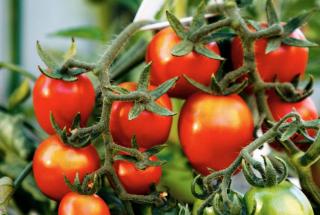
Cast the seeds of these ground cover crops between February and April. They’ll be ready for pulling out in May-June, just as your tomato seedlings need space for transplanting.
As they grow, these types of green manure replenish nutrients to the soil, enhance soil structure, and lock nitrogen in to keep it from washing out. Don’t get rid of them upon pulling them out: just spread them around your young tomato seedlings for mulch.
Nothing goes to waste! Plan for the next year in Fall: layer compost all over the growing bed in autumn and cover that with mulch for the entire winter. If it hasn’t yet broken down entirely, remove the mulch to sow the green manure or seeds will have trouble germinating.
To avoid tomato blight, we recommend planting basil or garlic chives around your tomato plant. On the other hand, set your potato plants far away. The reason is that potato is very vulnerable to blight. It catches it earliest and then contaminates nearby tomato plants.
All sorts of companion flowers can also help our favorite Solanaceae! Zinnia, all types of marigolds – common, French, Mexican… – will help repel nematodes, whitefly and aphids. In addition, French and Mexican marigolds hinder appearance of Alternaria pathogens responsible for early blight.
Tomato plants give back to the garden, too! Tomato disorients and repels flea beetle, large white, cabbage fly, diamondback moth, carrot fly… That’s why you’ll often pair tomato and cabbage, or why tomato trimmings are spread under cabbage heads. However, tomato roots will tend to choke out fennel, leek, bell pepper, carrot, lettuce, escarole and melon. Differences in climate and local pest profiles mean some experimenting is needed to find the right combination for your garden.
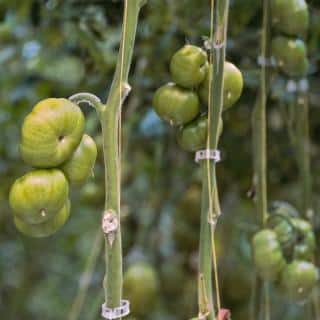
If you do begin to trim your tomato, the time to start is around one month after planting. Remove every single sucker, which is what secondary shoots emerging from leaf nodes on the main stem are called. These tend to drain the plant’s energy. In cooler regions, however, it’s recommended to behead the main stem as soon as 4 or 5 clusters of flowers have started forming.
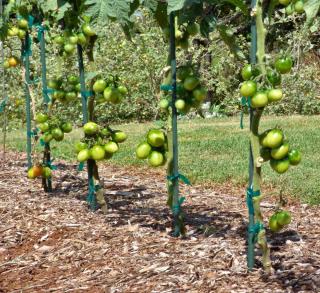
To make them easier to trim and prune, go for staking or use a cage.
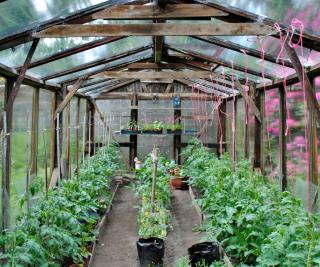
The occasional drops lining leaf edges, in this case, are the sign of a healthy plant: guttation.
Thanks to the shelter, it’s much easier to control watering. Soil can stay cool while leaves stay dry, which is ideal. Sow in February and transplant to the ground as early as April. This is usually a full month earlier than if you were planting outdoors. It’s the most effective way to extend the growing season. Drawbacks are the need to water and fertilize more often, since natural processes like rain and nutrient breakdown don’t happen anymore. Remember to ventilate your greenhouse to make it inhospitable for other types of pests.
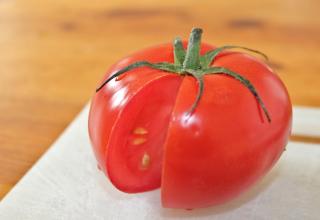
Year in and year out, your plants will evolve to perfectly match your growing environment!
One note of caution: there’s no point in gathering seeds from an F1 hybrid tomato. A hybrid results from forced cross-pollination, and F1 hybrids are sterile or degenerative.
Awesome tips for tomato care! I always struggle with determining the right amount of water. Overwatering can be tempting, but it’s crucial to find that balance.